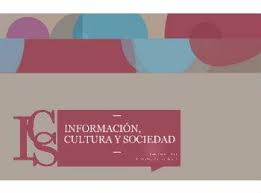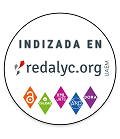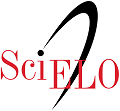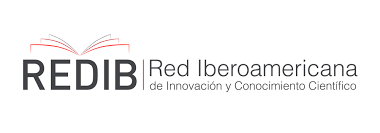Scientific concentration and inequality in Latin America and the Caribbean at the beginning of the 21st century: A scientometric study
Abstract
Latin America and the Caribbean is a wide, diverse and unequal region, even in science and technology. This article analyzes the concentration of scientific inputs and outputs and discusses aspects of inequality in regional science. This is a scientometrics study based on input data and scientific production of the region indexed in the Web of Science and in SciELO Citation Index. Results show that the distribution of science is quite irregular among the different fields and countries, with few nations concentrating most of the investments, human resources, journals, articles and citations. The study concludes that regional science is marked by acute inequality, led by few countries and characterized by low regional integration.Downloads
References
Abramo, Giovanni, Ciriaco Andrea D’Angelo y Flavia Di Costa. 2015. A new approach to measure the scientific strengths of territories. En Journal of the Association for Information Science and Technology. Vol. 66, no. 6, 1167-1177. <https://doi.org/10.1002/asi.23257>
Aguado-López, Eduardo, Arianna Becerril-García, Miguel Leal Arriola, Daniel Néstor Martínez-Domínguez. 2014. Iberoamérica en la ciencia de corriente principal (Thomson Reuters / Scopus): una región fragmentada. En Interciencia. Vol. 39, no. 8, 570-579. <https://www.redalyc.org/articulo.oa?id=33931820006>[Consulta: 24 septiembre 2020]
Arunachalam, Subbiah. 1995. Science on the periphery: can it contribute to mainstream science? En Knowledge and Policy. Vol. 8, no. 2, 68-87.<https://doi.org/10.1007/BF02825969>
Bradford, Samuel C. 1985. Sources of information on specific subjects. En Journal of Information Science. Vol. 10, no. 4, 176-180. <https://doi.org/10.1177/016555158501000407>
Canales Sánchez, Alejandro. 2007. La política científica y tecnológica en México: el impulso contingente en el periodo 1982-2006. México: FLACSO. 311 p. Tesis de doctorado. <https://www.ses.unam.mx/integrantes/uploadfile/rrodriguez/Canales2007_Tesis.pdf> [Consulta: 24 septiembre 2020].
Catanzaro, Michele, Giuliana Miranda, Lisa Palmer y Aleszu Bajak. 2014. South American science: Big players. En Nature. Vol. 510, no. 7504, 204-206. <https://doi.org/10.1038/510204a>
Chavarro, Diego Andrés. 2016. Universalism and particularism: explaining the emergence and growth of regional journal indexing systems. Brighton: University of Sussex. 213 p. Tesis de doctorado. <http://sro.sussex.ac.uk/id/eprint/66409>[Consulta: 24 septiembre 2020]
Collazo-Reyes, Francisco. 2014. Growth of the number of indexed journals of Latin America and the Caribbean: the effect on the impact of each country. En Scientometrics. Vol. 98, no. 1, 197-209. <https://doi.org/10.1007/s11192-013-1036-2>
Delgado, Jorge Enrique. 2011. Journal publication in Chile, Colombia, and Venezuela: university responses to global, regional, and national pressures and trends. Pittsburgh: University of Pittsburgh. 258 p. Tesis de doctorado. <http://d-scholarship.pitt.edu/9049/> [Consulta: 24 setiembre 2020].
European Comission. 2003. Third European report on Science & Technology indicators 2003: towards a knowledge-based economy. Luxembourg: European Communities.
Ferranti de, David, Guillermo E. Perry, Francisco H. G. Ferreira y Michael Walton. 2004. Inequality in Latin America : Breaking with History? Washington, DC: World Bank. <https://openknowledge.worldbank.org/handle/10986/15009> [Consulta: 24 setiembre 2020].
Frame, John Davidson. 1977. Mainstream research in Latin America and the Caribbean. En Interciencia. Vol. 2, no. 3, 143-147. <https://doi.org/10.1177/030631277700700406>
Frame, John Davidson, Francis Narin y Mark P. Carpenter. 1977. The distribution of world science. En Social Studies of Science. Vol. 7, no. 4, 501-516.
Gaillard, J. 1994. Asociación de investigación Norte-Sur: ¿es posible la colaboración entre socios desiguales? En Conocimiento y Políticas, Pittsburg. Vol. 7, no. 2, 31-63.
Garfield, Eugene. 1995. Quantitative analysis of the scientific literature and its implications for science policy making in Latin America and the Caribbean. En Bulletin of the Pan American Health Organization. Vol. 29, no. 1, 87-95. <https://iris.paho.org/handle/10665.2/26904> [Consulta: 24 septiembre 2020].
Gibbs, Wayt. 1995. The lost science in the third world. En Scientific American. Vol. 273, no. 2, 92-99. <https://www.researchgate.net/publication/259056309_Lost_Science_in_the_Third_World> [Consulta: 24 septiembre 2020]
Glänzel, Wolfgang. 2003. Bibliometric as a research field: A course on theory and application of bibliometric indicators. Course Handouts.
Glänzel, Wolfgang, Jacqueline Leta y Bart Thijs. 2006. Science in Brazil. Part 1: a macro-level comparative study. En Scientometrics. Vol. 67, no. 1, 67-86. <https://doi.org/10.1007/s11192-006-0055-7>
King, David A. 2004. The scientific impact of nations. En Nature. Vol. 430, no. 6997, 311-316. < https://doi.org/10.1038/430311a>
Krauskopf, Manuel, María Inés Vera, Vania Krauskopf y A. Welljams-Dorof. 1995. A citationist perspective on science in Latin America and the Caribbean, 1981-1993. En Scientometrics. Vol. 34, no. 1, 3-25.<https://doi.org/10.1007/BF02019169>
Latin America & Caribbean Islands. 2015. En Nature. Vol. 522, no. 7556, S26-S27. <https://doi.org/10.1038>
Leta, Jacqueline. 2012. Brazilian growth in the mainstream science: the role of human resources and national journals. En Journal of Scientometric Research. Vol. 1, no. 1, 44-52. <https://doi.org/10.5530/jscires.2012.1.9>
Leta, Jacqueline, Bart Thijs y Wolfgang Glänzel. 2013. A macro-level study of science in Brazil: seven years later. En Encontros Bibli. Vol. 18, no. 36, 51-66. <https://doi.org/10.5007/1518-2924.2013v18n36p51>
May, Robert M. 1997. The scientific wealth of nations. En Science Vol. 275, no. 5301, 793-796. <https://doi.org/10.1126/science.275.5301.793>
Mugnaini, Rogério. 2006. Caminhos para adequação da avaliação da produção científica brasileira: impacto nacional versus internacional. São Paulo: Escola de Comunicações e Artes. Universidade de São Paulo. 253 p. Tesis de doctorado. <https://www.teses.usp.br/teses/disponiveis/27/27151/tde-11052007-091052/pt-br.php> [Consulta: 24 septiembre 2020].
Ràfols, Ismael, Jordi Molas-Gallart, Diego Andrés Chavarro y Nicolas Robinson-Garcia. 2016. Onthe Dominance of Quantitative Evaluation in ‘Peripheral’ Countries: Auditing Research with Technologies of Distance (May 28, 2016). SSRN Electronic Journal. <http://dx.doi.org/10.2139/ssrn.2818335 >
RICYT. Red de Indicadores de Ciencia y Tecnología Iberoamericana e Interamericana. 2017. El Estado de la Ciencia 2017: principales indicadores de ciencia y tecnología iberoamericanos / interamericanos. Buenos Aires: RICYT. <http://www.ricyt.org/2017/10/el-estado-de-la-ciencia-2017/> [Consulta: 24 septiembre 2020]
Russell, Jane M. 2000. Publication indicators in Latin America revisited. En Cronin, Blaise y Helen Barsky Atkins, eds. Web of Knowledge: a festschrift in honor of Eugene Garfield. Medford: Information Today. p. 233-250.
Salatino, Maximiliano. 2017. La estructura del espacio latinoamericano de revistas científicas. Mendoza: Facultad de Ciencias Políticas y Sociales. Universidad Nacional de Cuyo. 326 p. Tesis de doctorado. <https://bdigital.uncu.edu.ar/10720> [Consulta: 24 setiembre 2020].
Saldaña, Juan José, ed. 2006. Science in Latin America: a history. Austin: Texas University Press.
Santin, Dirce Maria. 2019. Ciência mainstream e periférica da América Latina e Caribe: configurações e padrões de especialização. Porto Alegre: Universidade Federal do Rio Grande do Sul. 297 p. Tesis de doctorado.
Schott, Thomas. 1998. Ties between center and periphery in the scientific world-system. En Journal of World-Systems Research. Vol. 4, no. 2, p. 112-144. <https://doi.org/10.5195/jwsr.1998.148>
Unesco. United Nations Educational, Scientific and Cultural Organization. 2015. Unesco Science Report 2015: towards 2030. Paris: UNESCO. <https://unesdoc.unesco.org/ark:/48223/pf0000235406> [Consulta: 24 septiembre 2020]
United Nations, Statistics Division. 2014. Standard country or area codes for statistics use. <https://unstats.un.org/unsd/methodology/m49> [Consulta: 14 noviembre 2019]
Vélez-Cuartas, Gabriel, Diana Lucio-Arias y Loet Leydesdorff. 2016. Regional and global science: Latin American and Caribbean publications in the SciELO Citation Index and the Web of Science. En El Profesional de la Información. Vol. 25, no. 1, 35-46. <http://dx.doi.org/10.3145/epi.2016.ene.05>
Velho, Lea. 2004. Science and technology in Latin America and the Caribbean: an overview. Maastricht: United Nations University.
Authors publishing in this journal acknowledge the conditions below:
- Authors retain the copyright of their work while they transfer the right of the first publishing to the journal, under the Creative Commons Attribution-ShareAlike 4.0 International (CC BY-SA 4.0) Licence, which allows third parties to reproduce them under the condition that express mention is given to the author and to its original publication in the journal.
- Authors may enter into other contractual and independent arrangements for the non-exclusive distribution of the version of the article published in this journal (for instance, it can be published in an institutional repository or in a book). In any case, an express mention should be given to its first publication in the journal.
- It is permitted and encouraged to publish online the articles (for example, on institutional or personal pages).


























